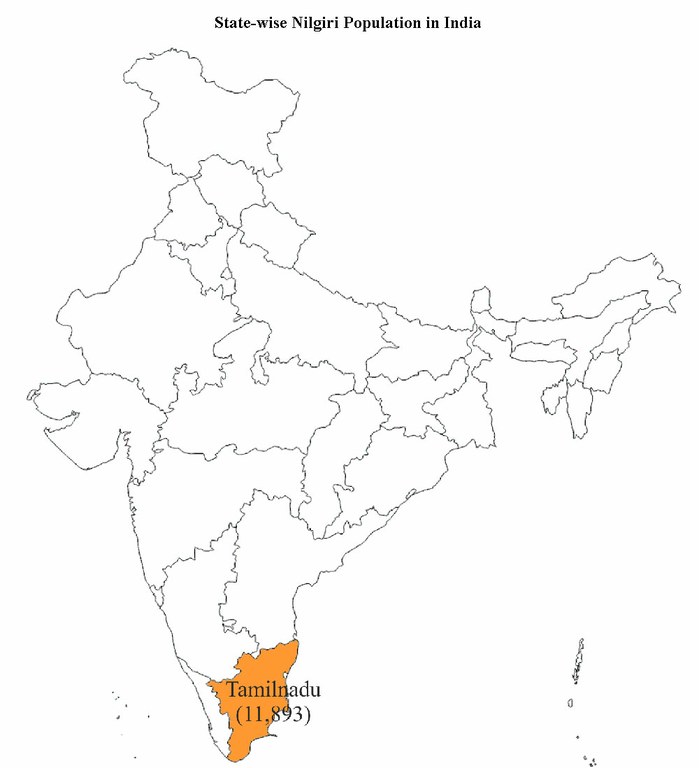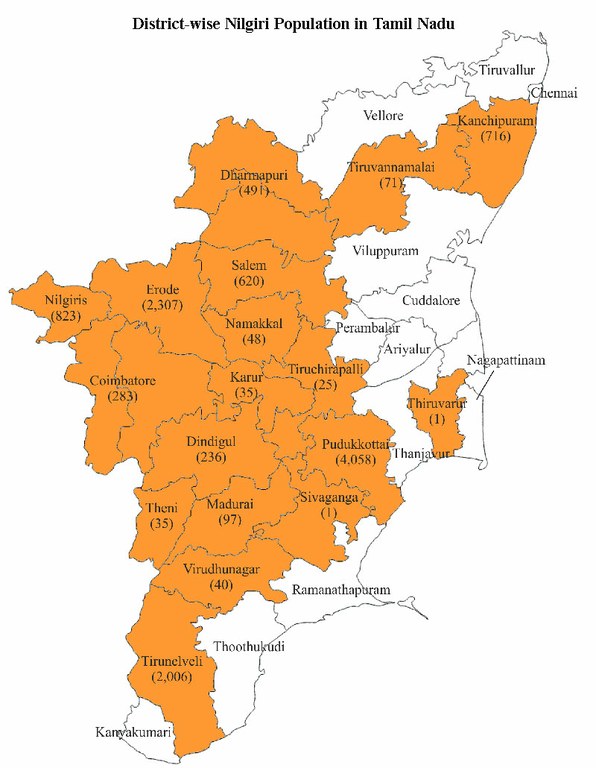Nilgiri
by
ruchita
—
last modified
Jul 03, 2014 04:07 PM
May 03, 2013
The Nilgiri breed is said to have evolved during the 19th century, originating from a cross-breed base and contains an unknown level of inheritance of Coimbatore, the local hairy breed, Tasmanian Merino, Cheviot and Southdown.
 They are found in the Nilgiri hills in Tamil Nadu. The breed is well adapted to the conditions of the region and produces a fine fleece. There is little organized shearing and marketing of wool, the sheep being mostly maintained for manure by tea planters and other flock owners. There is need for conservation of this breed, considering its very small numbers, its adaptation, and the need for meat and apparel wool in the area in which it is located. They are medium-sized animals. Their body colour is white; however, sometimes there are brown patches on the face and body. The face line is convex, giving a typical Roman nose. Ears are broad, flat and drooping. Males have horn buds1 and scurs2; females are polled. The tail is medium and thin and the fleece is fine and dense. Under farm conditions lambing percentage is 65; litter size is single. The average annual fleece weight is 1.23 kg with an average fibre diameter and density of 27 μ and 2,200 cm2 respectively, with a medullation percentage of 11.
They are found in the Nilgiri hills in Tamil Nadu. The breed is well adapted to the conditions of the region and produces a fine fleece. There is little organized shearing and marketing of wool, the sheep being mostly maintained for manure by tea planters and other flock owners. There is need for conservation of this breed, considering its very small numbers, its adaptation, and the need for meat and apparel wool in the area in which it is located. They are medium-sized animals. Their body colour is white; however, sometimes there are brown patches on the face and body. The face line is convex, giving a typical Roman nose. Ears are broad, flat and drooping. Males have horn buds1 and scurs2; females are polled. The tail is medium and thin and the fleece is fine and dense. Under farm conditions lambing percentage is 65; litter size is single. The average annual fleece weight is 1.23 kg with an average fibre diameter and density of 27 μ and 2,200 cm2 respectively, with a medullation percentage of 11. According to the 18th Livestock Census of 2007, there are 11,893 Nilgiri sheep left in India.
| Adult Male | Adult Female | |
|---|---|---|
| Average Body weight (kg) | 31 | 25 |
| Average Body length (cm) | 64 | 59 |
| Average Height at withers (cm)3 | 65 | 58 |
| Average Chest girth (cm) | 77 | 75 |


References:
- Horn Buds are short, stumpy horns attached to the skull.
- A scur is a horny growth on the skin not attached firmly to the skull. Late or improper removal of horns (disbudding) can result in deformed horn growth or scurs.
- Height at withers is the highest point on an animal’s back on the ridge between the shoulder blades (Source http://www.cardi.org/wp-content/files/factsheets/factsheet_sheepbreeds.pdf)
Text Source: http://www.fao.org/docrep/004/x6532e/X6532E04.htm#ch3.2.10
Photo Source: CSWRI, Avikanagar









